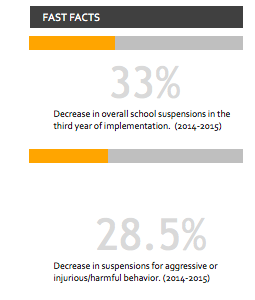ESI is committed to eliminating the school-to-prison pipeline. Several studies have shown that students with higher numbers of suspensions are more likely to end up in prison, with young men of color disproportionately suspended relative to other groups. To combat these statistics, several ESI schools have implemented Restorative Justice (RJ) practices. The goal of restorative practices is to create school unity, reduce conflict, and foster a safe environment where students can speak their mind.
The Urban Assembly School of Design and Construction is one of several ESI schools that have put these practices in place. This year marks its third year at UADC, and, so far, the results have been positive. Statistics show that in schools utilizing restorative practices, students and staff feel more accepted and safer in their school community. UADC has even added a separate RJ class. A group of 10- 12 students meets twice a week to talk about issues affecting their school and plan for any upcoming circles they will have to conduct.
The circles are student-run. Everyone gets a chance to speak if they wish to do so. To sustain the mutual respect in the circle, in order to speak you must be holding a “special item.” This item gets passed around, which ensures that only one person is speaking at a time. These circles help create a restorative language that the students can take outside of the school and use whenever conflicts may arise.

by Erica Pretel



